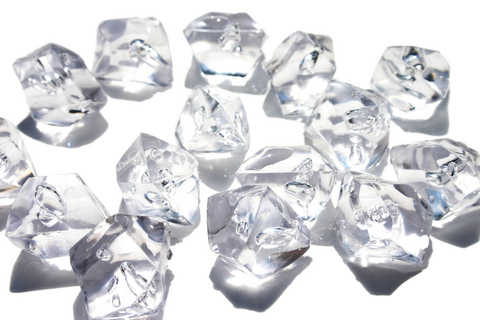Diamonds are forever... solid and strong
Diamond is one of the hardest known naturally occurring minerals in the world.
But what happens when you put the hardest known mineral under eight million atmospheres of pressure? It remains solid, strong and in the diamond phase.
Laboratory scientists discovered that this is the highest pressure, solid-state equation-of-state data ever reported. It appears in the Feb. 20 edition of Physical Review Letters .
The team — David Bradley, Jon Eggert, Ray Smith, Shon Prisbrey, Damien Hicks, David Braun, Juergen Biener, Alex Hamza, Robert Rudd and Gilbert Collins — used ramp-wave compression techniques to determine what happens to diamond at 14 million atmospheres of pressure.
The cores of Jupiter, Saturn and many extra-solar planets are believed to contain solid material at pressures greater than 10 million times Earth’s atmospheric pressure. For years, scientists have tried to replicate that pressure on Earth solids.
To date, other techniques such as diamond-anvil-cells can only produce about three million atmospheres of pressure upon a solid. Shock compression can produce significantly higher pressures than static experiments, but also produces a significant temperature increase so that typically only properties of the fluid phase can be explored above about a couple million atmospheres of pressure.
However using the ramp-wave compression technique, the diamond sustained eight million atmospheres of pressure and still remained stable and strong.
"This showed us that the diamond phase of carbon is stable and has significant material strength at this stress level," Bradley said. "This is the highest pressure solid-state data ever collected, and it extends the current boundaries of solid-state physics into an even higher pressure regime."
The team illuminated two-millimeter-square diamond samples within hohlraums (a cavity whose walls are in radiative equilibrium with the radiant energy within the cavity) using up to 21 beams of the OMEGA laser at the University of Rochester with a combined energy of 5.7 kilojoules in a 3.5-nanosecond temporally ramped pulse.
The new ramp-wave compression technique (sometimes called quasi-isentropic compression) extends shockless-dynamic compression to pressures more than five times higher than previously achieved.
Once the higher energy National Ignition Facility is running experiments, "applying similar techniques with an optimized 30-nanosecond pulse shape could potentially ramp-compress a broad range of solids to several tens of millions of atmospheric pressure," Bradley said.





